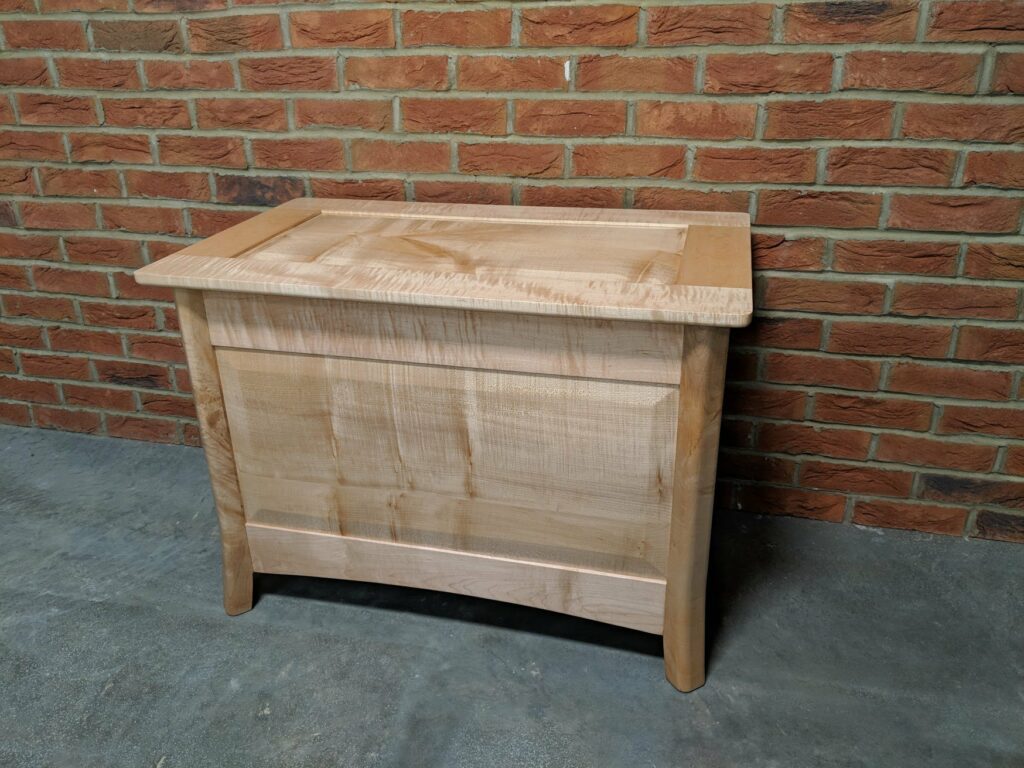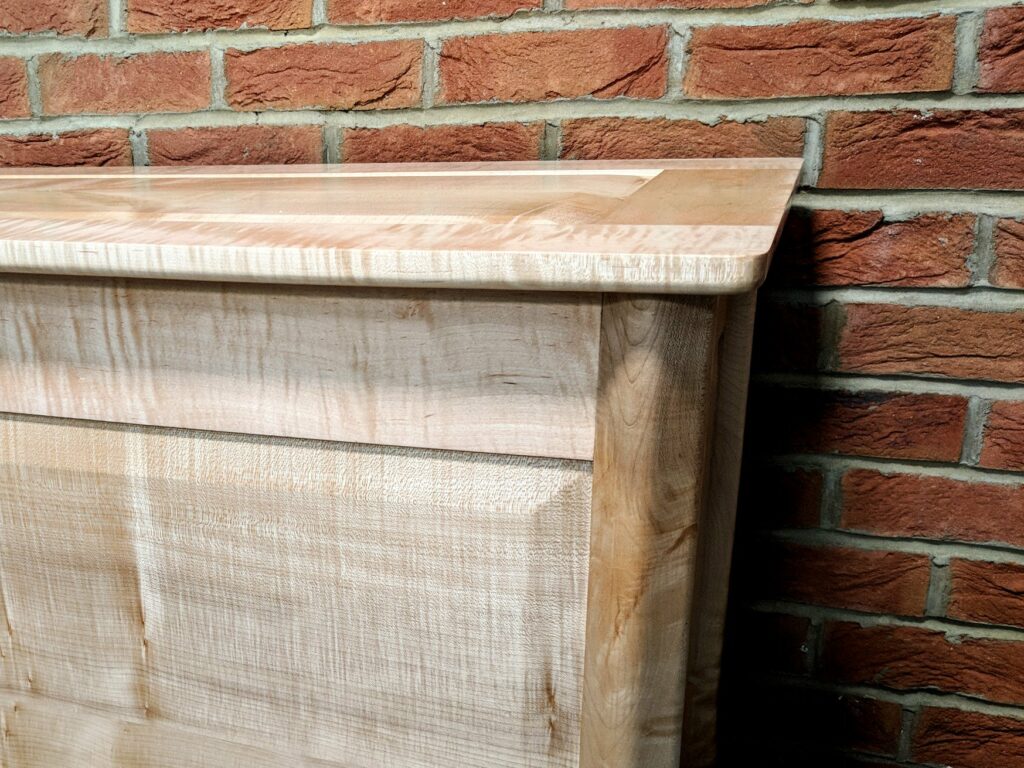More Than a Blanket Chest
It’s been a struggle. Rough sawn boards of sycamore and maple, thick sections ripped for legs by hand and then shaped with spokeshaves with scarcely room in my workshop to move. The truth is, though, the result of working through difficulties and challenges thrilled me. The fact that I wasn’t looking for an easy path of unskilled work and at my age somehow still captivated me in the same way I would be when I climbed rock faces every weekend rather than follow the footpath way down below my climb. I’m glad I stopped using a router for such things as rounding over, rebating and routing out dadoes. The sterility of perfectly machined quadrants and the setting up of jigs as guides have never been part of my life. This alone led me to an enriched my life filled with wonderful memories of skilled work.
Today I am moving downstairs and into my new workshop. Gathering my tools into banana boxes has always made me feel unsettled, but with the conclusion of building my garage workshop, finishing off the blanket chest, relocating my mind for a fresh association, is part of who I am. I build. I build furniture and buildings, I build hope in people that love the idea of becoming woodworkers like myself. I build ideas. 
Today is a special day in that sense of uniqueness.


Always a pleasure to see your work, and regret I am not fit enough to emulate it.
I have to say that the English Sycamore is a very pretty figured wood.
OK Paul, lets have it, where did you get the Sycamore and Maple
from and how much did it cost? Nice timber in the UK
is always expensive. I have saved up for the odd piece over 50 years
and hardly had a “bargain” The chest is a credit to your skill, looks great.
Graham
Hi Paul
After starting as a bench joiner in the late 70’s then taking the path as a building company owner for the last 15 years, I’ve now been fortunate enough to semi retire and live in the New Forest with a small workshop. You have inspired me to return to my roots and hand tool work. It’s incredible the detoxifying and stress relieving nature of going back to the basics of our craft and since making my personal life change both health and positive outlook has returned in spades and the pride of my woodworking youth is flooding back….Thank you Paul.
Thank you for the idea and hope you gave me.
Also congratulations on the new workspace 🙂
Always love to see what and how you do what you do. Would you kindly tell me a little about working with sycamore and what it’s good for? I live in New York City and there are always cut down trees readily available, but I never see anyone work with the stuff.
Usually it’s too much trouble for city tree surgeons to remove trees or harvest them for slabbing into boards. people always assume that all trees will make more than they really will. In reality it’s mostly not commercially viable to take heavy equipment in to remove diseased and deformed trees and then take it the extra step to bring about usable wood for furniture. Of course for many woodworkers it would work but then there is the liability of having people climbing over felled trees and branches if you let people come and cannibalise a tree.